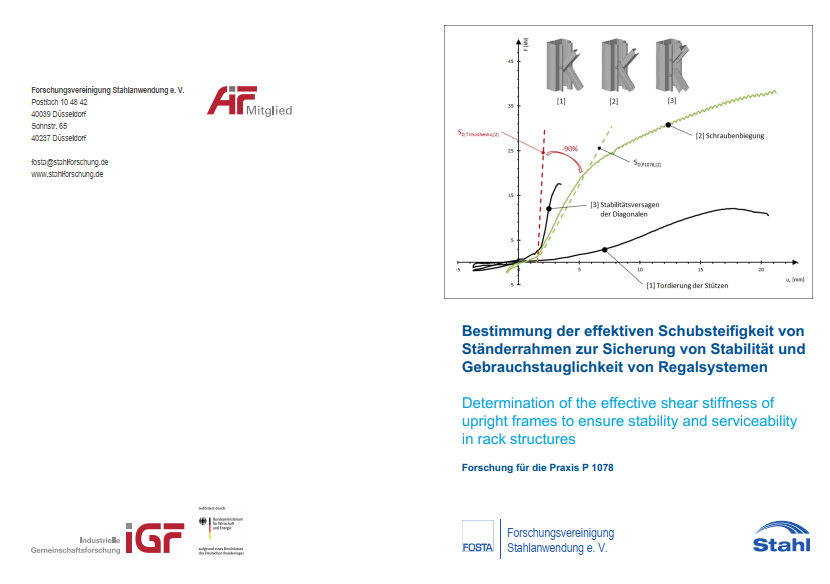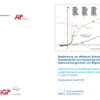Description
For the construction of high bay warehouses upright frames build of thin-walled and cold-formed steel members are used. Due to the nature of the thin-walled steel members, the shear stiffness of the upright frames is significant reduced in comparison to the shear theory of Engesser. Until now, the fundamentals for the analytical calculation of the shear stiffness are not given. Therefore, it is common practice to determine the shear stiffness of uprigth frames experimentally. This approach is very costly and impedes the further optimisation of the highly stressed rack structures.
As a first part of this research project, a comprehensive literature search was carried out. The existing findings on the relevant influencing factors were gathered and the fundamentals for the application of the component method were prepared. By means of 73 full scale test, the load-bearing and deformation behaviour of the upright frames has been analysed in “lying” and “standing” shear stiffness tests. Based on the test results and further comparative calculations, it could be shown that the pure shear stiffness is not related to the “lying” or “standing” test procedure. The deviation in the test results are solely due to the different ratio of global bending deformations.
The in-depth knowledge of the load-bearing and deformation behaviour of the upright frames has helped to identify the main influencing factors for the lack of stiffness and to develop an analytical approach which contains eight different components. For each component, stiffness coefficients have been derived by analytical or numerical methods.
Based on Engesser´s work, a comprehensive model was developed, which combines the shear stiffness attributed to each component to the equivalent shear stiffness of the upright frame. By means of the comprehensive model and the separation of the upright frames in eight different components which effects the shear stiffness, it was possible to identify the key components and enables a targeted optimisation of the shear stiffness.
In the course of the research project optimisation, potentials were pointed out and economic considerations have been carried out. To enable a simple application of the comprehensive model in practice, a guideline was developed and furthermore presented
in examples of use.
FOSTA – Research Association for Steel Application
April 2019
Only available in German language.




